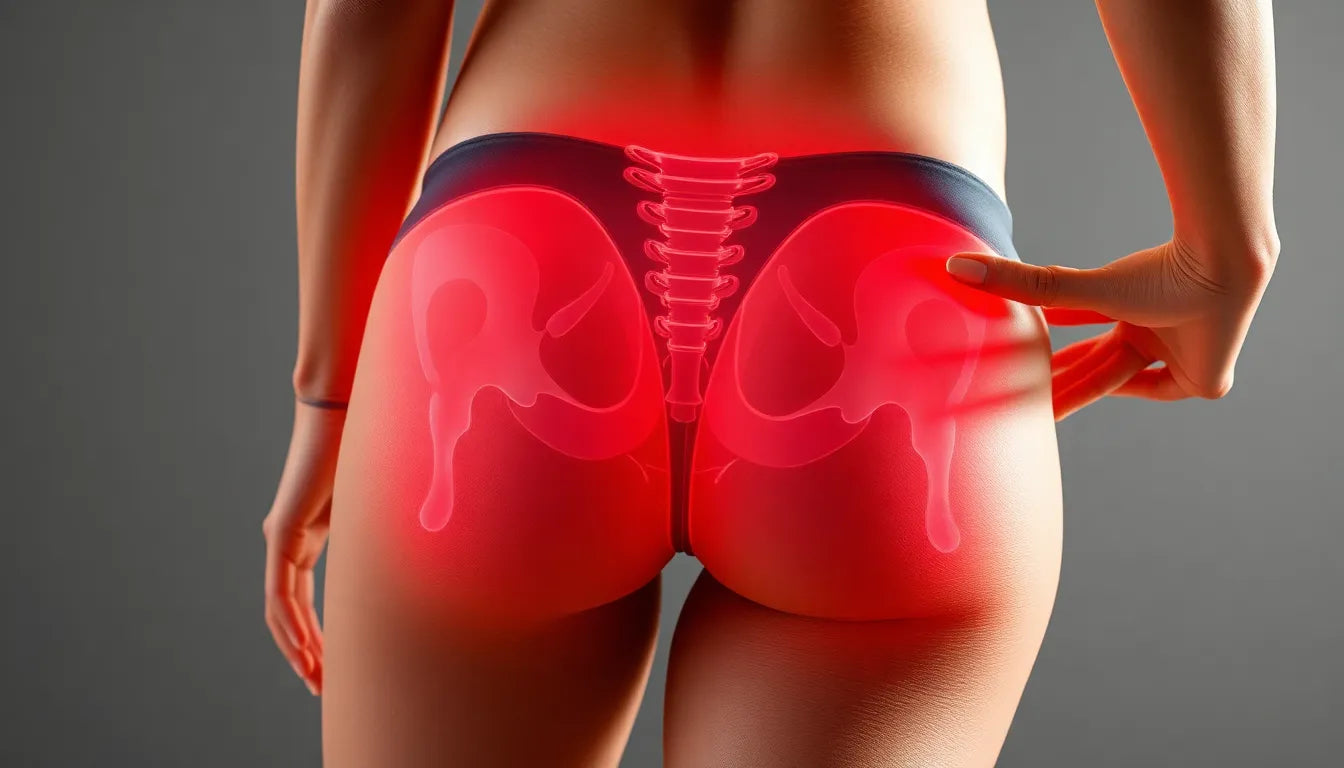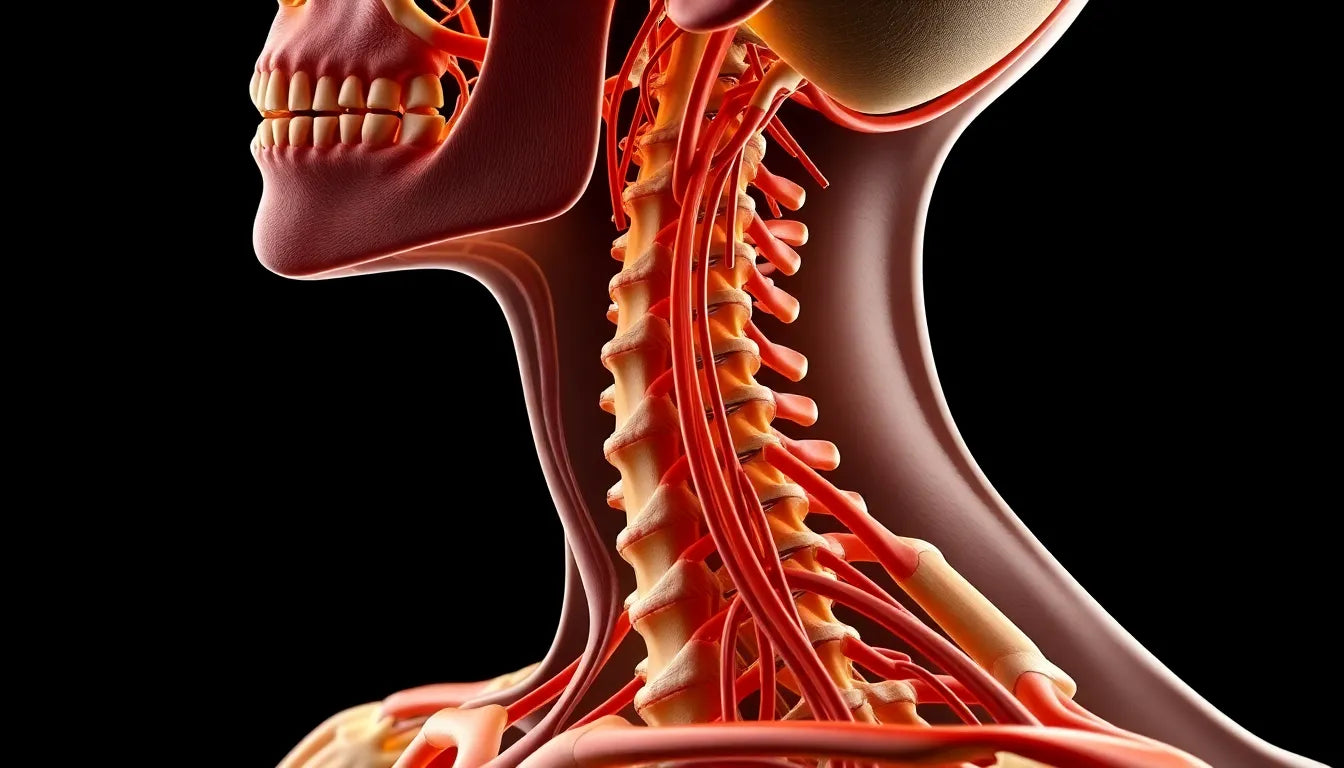Stabbing hip pain is a common yet complex symptom that affects a significant number of individuals, impacting their daily activities and overall quality of life. This sharp, intense pain can arise suddenly or persist over time, and it often signals an underlying issue that warrants attention. Understanding the nature of this pain is crucial, as it can stem from various acute or chronic conditions, each requiring a unique approach for effective management.
Understanding stabbing hip pain
Hip pain characterized by a stabbing sensation can be alarming, as it often disrupts normal movement and can significantly hinder one's ability to perform everyday tasks. This type of pain can originate from multiple sources, including orthopedic, neurological, and rheumatological conditions. Common causes range from structural issues like femoroacetabular impingement (FAI) and labral tears to other conditions such as tendonitis, nerve impingement, and even systemic problems like osteoarthritis or lumbar spine pathology.
The impact of stabbing hip pain on quality of life cannot be overstated. It can restrict mobility, reduce participation in physical activities, and lead to a decrease in overall well-being. Whether the pain is acute, resulting from a sudden injury, or chronic, developing over time due to repetitive stress or degeneration, understanding its root cause is essential for finding relief and preventing further complications.
Common concerns and misconceptions
When it comes to hip pain, several misconceptions can lead to misdiagnosis or inappropriate treatment. For instance, many people might attribute their pain to minor issues like bursitis, which is often overdiagnosed. True bursitis is less common than assumed, and the pain is more frequently due to tendinopathy or issues with the gluteal muscles.
There is also a tendency to overlook the possibility of more serious causes, such as labral tears or FAI, which can lead to persistent and debilitating pain if not properly addressed. These conditions require a thorough evaluation to ensure accurate diagnosis and effective treatment. By dispelling these common myths and providing accurate information, individuals can make informed decisions about their health and seek appropriate care for their symptoms.
In the following sections, we will delve deeper into the specific causes and symptoms of stabbing hip pain, along with practical strategies for management and relief. Understanding these aspects will empower you to take control of your hip health and improve your quality of life.
Primary causes of stabbing hip pain
Femoroacetabular impingement (FAI)
Femoroacetabular impingement, commonly known as FAI, is a significant cause of stabbing hip pain, particularly among younger and athletic individuals. This condition arises when there is abnormal contact between the femoral head and the acetabulum, often due to bony overgrowths known as cam or pincer lesions. These structural abnormalities lead to restricted movement and sharp pain, especially during activities that involve hip flexion or rotation.
Symptoms of FAI include sharp, stabbing pain during movement, stiffness, and sometimes a clicking sensation in the hip. The "C-sign," where patients cup their hip with their thumb and forefinger, is a classic way to localize the pain associated with FAI. Diagnosing FAI typically involves physical examinations, such as the FADIR test, and imaging techniques like X-rays or MRIs. Treatment options range from conservative approaches, including rest and physical therapy, to surgical interventions like arthroscopic surgery if symptoms persist.
Labral tears
Labral tears are another common cause of sharp hip pain and are often associated with trauma or FAI. The labrum is a ring of cartilage that surrounds the hip joint, providing stability and cushioning. Tears in the labrum can result from acute injury or repetitive stress, leading to symptoms such as sharp pain, clicking, catching, or locking sensations, and reduced mobility.
Early intervention is crucial in managing labral tears to prevent further joint damage. Management strategies typically include rest, physical therapy, and in some cases, surgical repair to restore joint function and alleviate pain.
Other notable causes
Tendonitis and muscle strain
Tendonitis, the inflammation of tendons, can result in sharp pain, particularly during physical activities. This condition is often seen in athletes or individuals who engage in repetitive movements. Muscle strains, on the other hand, occur when muscles are overstretched or torn, leading to acute pain after sudden exertion or injury.
Nerve impingement and bursitis
Nerve impingement can cause localized stabbing pain, often accompanied by muscle weakness, tingling, or numbness that extends down the leg. It's important to accurately diagnose nerve-related issues to ensure proper treatment. Bursitis, while commonly misdiagnosed, involves inflammation of the bursae, small fluid-filled sacs that cushion the hip joint. True bursitis is less common than assumed, and its symptoms include sharp pain, particularly on the outside of the hip.
Systemic and referred causes
Other systemic issues such as osteoarthritis, lumbar spine pathology, and rare conditions like hernias or infections can also refer pain to the hip. Osteoarthritis typically presents with dull, chronic pain, but flare-ups can cause sharp pain. Lumbar spine issues, including disk herniations, may refer pain to the hip, often accompanied by neurological symptoms.
Comparison of causes and symptoms
Understanding the diverse causes of stabbing hip pain is essential for effective diagnosis and treatment. The table below summarizes the key symptoms and typical patient profiles for each condition:
| Cause | Symptoms | Typical Patient Profile |
|---|---|---|
| Femoroacetabular Impingement (FAI) | Sharp pain, stiffness, clicking | Younger, athletic individuals |
| Labral Tears | Sharp pain, clicking, reduced mobility | Active individuals, history of trauma |
| Tendonitis | Sharp pain during activity | Athletes, repetitive motion |
| Muscle Strain | Acute pain after exertion | Active individuals |
| Nerve Impingement | Localized pain, neurological signs | Varies, often with lumbar issues |
| Bursitis | Sharp pain on the outside of the hip | Older adults, overuse injuries |
| Osteoarthritis | Dull pain, sharp during flare-ups | Older adults, chronic joint issues |
By understanding these causes and their associated symptoms, individuals can better communicate their experiences to healthcare providers, aiding in accurate diagnosis and effective treatment planning.
management and relief strategies for stabbing hip pain
Finding effective management and relief strategies for stabbing hip pain is essential to improving quality of life and maintaining mobility. Conservative treatments often serve as the first line of defense, focusing on reducing pain and inflammation while promoting healing.
conservative treatments
Rest is a fundamental component of managing hip pain, allowing inflamed tissues to heal. Physical therapy plays a critical role, offering exercises tailored to strengthen the hip muscles, improve flexibility, and enhance joint stability. Ergonomic adjustments, such as modifying workstations or using supportive seating, can also alleviate strain on the hip.

Women's Posture Shirt™ - Black
Improves posture, relieves pain and tensions, and activates your muscles during daily tasks.
Posture and activity modification are crucial for long-term relief. Maintaining proper alignment during daily activities reduces stress on the hip joint and prevents exacerbation of symptoms. Incorporating regular breaks and gentle stretches into your routine can further support hip health.
when to seek medical attention
While many cases of hip pain can be managed at home, certain symptoms necessitate professional evaluation. Red flag symptoms include persistent pain that does not improve with rest, fever, or an inability to bear weight on the affected leg. These signs may indicate a more serious underlying condition that requires a tailored diagnostic and treatment approach.
practical tips and ergonomic advice
Incorporating practical tips into daily life can provide immediate relief from stabbing hip pain. Gentle stretches, such as hip flexor and piriformis stretches, can alleviate tension and improve flexibility. Paying attention to posture, especially during prolonged sitting or standing, helps reduce hip strain.

Lumbar support belt
Supports and stabilizes the lower back to help combat pain and tension for daily comfort.
Ergonomic products, such as seat cushions or standing desks, can make a significant difference in managing hip pain. These aids promote better posture and reduce pressure on the hip joint, contributing to overall comfort and preventing further injury.
frequently asked questions
what is the most common cause of stabbing hip pain?
Femoroacetabular Impingement (FAI) and labral tears are frequently identified as common causes of stabbing hip pain, particularly in younger and athletic populations. Both conditions involve structural abnormalities that lead to sharp pain during movement.
can hip pain be managed at home, or is medical intervention necessary?
Many cases of hip pain can be managed with conservative treatments such as rest, physical therapy, and ergonomic adjustments. However, persistent or severe symptoms should be evaluated by a healthcare professional to rule out serious conditions and ensure appropriate treatment.
what exercises can help alleviate hip pain?
Gentle stretching and strengthening exercises can help alleviate hip pain. Exercises should be tailored to the individual's condition and may include hip flexor stretches, glute bridges, and core strengthening exercises to support hip stability.
how can ergonomic aids assist in managing hip pain?
Ergonomic aids, such as supportive chairs, seat cushions, and adjustable desks, can help manage hip pain by reducing strain on the hip during daily activities. These aids promote better posture, distribute weight evenly, and prevent further injury.
Understanding the underlying causes of stabbing hip pain and implementing appropriate management strategies can significantly improve quality of life. By seeking professional advice for persistent symptoms and considering ergonomic solutions, individuals can effectively manage their hip pain and maintain mobility.
Källor
- Advent Physical Therapy. (n.d.). "What's Your Body Saying When There Is a Sharp, Stinging Pain in Your Hip?"
- Academy Orthopedic. (n.d.). "Hip Injuries."
- Cleveland Clinic. (n.d.). "Hip Impingement (Femoroacetabular Impingement)."
- Harvard Health Publishing. (n.d.). "Think That Hip Pain Is Bursitis? Think Again."
- Rush University Medical Center. (n.d.). "7 Common Causes of Hip Pain."
- Maine Physical Therapy. (n.d.). "What to Do About Sudden Sharp Pain in the Hip That Comes and Goes."
- University of Utah Health. (2023). "Goodbye Hip Pain: Your Guide to Prevention and Treatment."
- Cleveland Clinic. (n.d.). "Hip Pain."


















